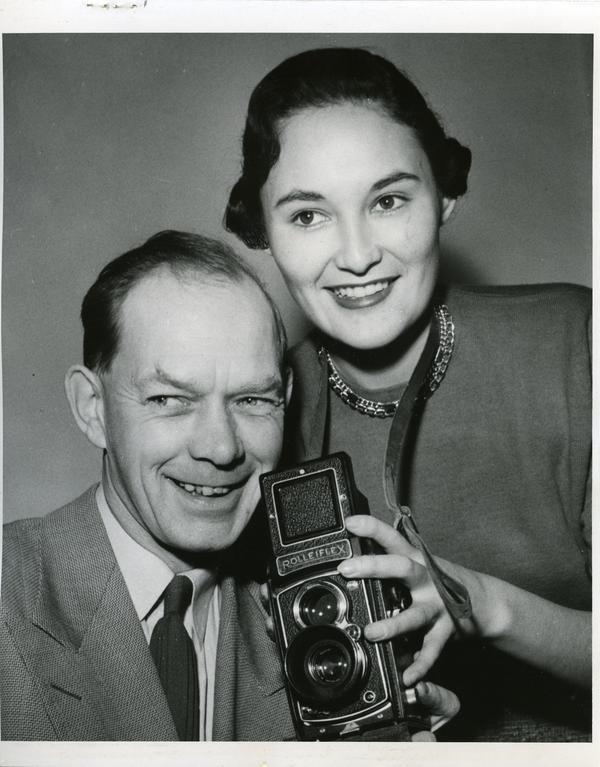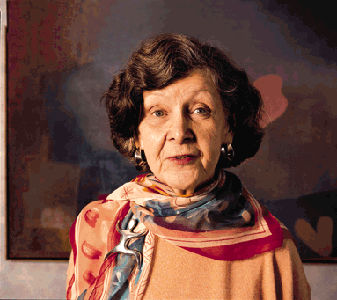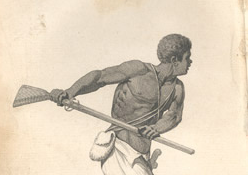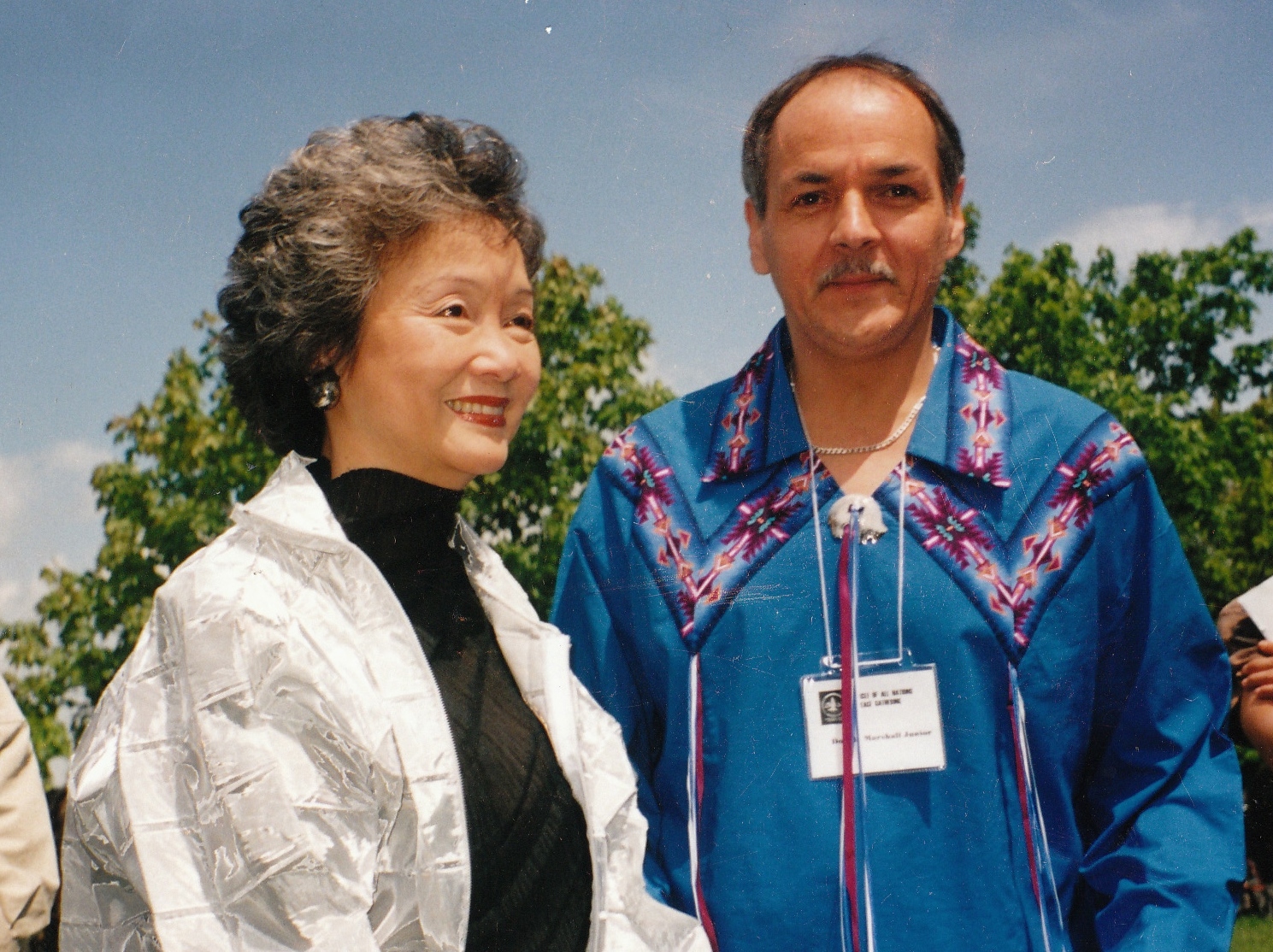Browse "Communities & Sociology"
-
Article
Madeleine de Verchères
Marie-Madeleine Jarret de Verchères (born 3 March 1678 in Verchères, Quebec; died August 1747 in Sainte-Anne-de-la-Pérade, Quebec). Madeleine de Verchères is best known for her role in the defence of Fort Verchères in New France in 1692. She is remembered as a military heroine, and her image became part of efforts to recruit Canadian women for wartime work during the First and Second World Wars.
"https://d2ttikhf7xbzbs.cloudfront.net/MadeleinedeVercheres/Madelaine-2.JPG" // resources/views/front/categories/view.blade.php
https://d2ttikhf7xbzbs.cloudfront.net/MadeleinedeVercheres/Madelaine-2.JPG -
Article
Marie Rollet
Marie Rollet, first Frenchwoman to settle in New France (born circa 1580 in Paris, France; died in May 1649 and buried 27 May 1649 in Quebec City, New France). She is recognized as the first female French farmer in New France, alongside her husband Louis Hébert.
"https://d2ttikhf7xbzbs.cloudfront.net/media/media/5bc5a1a0-fdd2-4ca7-8c1a-eeb54a285dba.jpg" // resources/views/front/categories/view.blade.php
https://d2ttikhf7xbzbs.cloudfront.net/media/media/5bc5a1a0-fdd2-4ca7-8c1a-eeb54a285dba.jpg
-
Article
Marina Nemat
Marina Nemat, writer, human rights activist (born 22 April 1965 in Tehran, Iran). Nemat emigrated to Canada in 1991, following her imprisonment and torture in Iran. In her published memoirs, Nemat describes her experiences under the Iranian regime, which she denounces. She is also a sought-after public speaker and has won numerous international awards for her commitment to the defence of human rights.
"https://d2ttikhf7xbzbs.cloudfront.net/media/media/49512e3c-b27b-491b-bc3b-37eecdf24a33.jpg" // resources/views/front/categories/view.blade.php
https://d2ttikhf7xbzbs.cloudfront.net/media/media/49512e3c-b27b-491b-bc3b-37eecdf24a33.jpg
-
Article
Marion De Chastelain
Marion De Chastelain, intelligence agent, mother of John De Chastelain, (b 1910, New York, NY; d 1999, Calgary, AB).
"https://development.thecanadianencyclopedia.ca/images/tce_placeholder.jpg?v=e9dca980c9bdb3aa11e832e7ea94f5d9" // resources/views/front/categories/view.blade.php
https://development.thecanadianencyclopedia.ca/images/tce_placeholder.jpg?v=e9dca980c9bdb3aa11e832e7ea94f5d9
-
Article
Marion Meadmore
Marion Meadmore (née Ironquill), OC, Ojibwe-Cree, one of the first Indigenous female lawyers in Canada, newspaper editor, community activist, founder and co-founder of national and Prairie Indigenous organizations (born in 1936 on the Peepeekisis reserve near Balcarres, SK.) She helped create the National Indian Council and co-founded the National Indigenous Council of Elders and the Indigenous Bar Association of Canada.
"https://d2ttikhf7xbzbs.cloudfront.net/media/media/eff80fd7-59fa-402a-9c23-35dd9c916648.jpg" // resources/views/front/categories/view.blade.php
https://d2ttikhf7xbzbs.cloudfront.net/media/media/eff80fd7-59fa-402a-9c23-35dd9c916648.jpg
-
Macleans
Marion Woodman (Profile)
This article was originally published in Maclean’s magazine on May 13, 1996. Partner content is not updated. In the 17 years since she began popularizing the dream theories of Swiss psychiatrist Carl Jung, Woodman has become one of the biggest names in the continent's human potential circles.
"https://d2ttikhf7xbzbs.cloudfront.net/media/media/28ce2282-283d-4bc9-8289-00a1cc4e0c95.jpg" // resources/views/front/categories/view.blade.php
https://d2ttikhf7xbzbs.cloudfront.net/media/media/28ce2282-283d-4bc9-8289-00a1cc4e0c95.jpg
-
Article
Marius Barbeau
Barbeau returned to Canada in 1910, and was hired the next year as anthropologist and ethnologist to the Museum Branch of the Geological Survey of Canada (which in 1927 became the National Museum).
"https://d2ttikhf7xbzbs.cloudfront.net/media/media/d8bad75b-2492-42a8-96bd-ff558033466d.jpg" // resources/views/front/categories/view.blade.php
https://d2ttikhf7xbzbs.cloudfront.net/media/media/d8bad75b-2492-42a8-96bd-ff558033466d.jpg
-
Article
Markoosie Patsauq
Markoosie Patsauq, Inuk writer, pilot, community leader (born 24 May 1941 near Inukjuak [then Port Harrison], QC; died 8 March 2020 in Inukjuak, QC). The life of Markoosie Patsauq intersected dramatically with many of the most significant events affecting Inuit in 20th century Canada. He survived upheaval and trauma, both collective and individual, and went on to be the first Inuk and the first Indigenous person in Canada to publish a novel. Uumajursiutik unaatuinnamut, or Hunter with Harpoon, appeared serially in 1969–70 in Inuktitut and then as an English adaptation in late 1970. Patsauq’s writing career spanned many decades and included fiction as well as essays on topics ranging from his flying career to his experiences of colonization and injustice. (See also Influential Indigenous Authors in Canada.)
"https://d2ttikhf7xbzbs.cloudfront.net/MarkoosiePatsauq/MarkoosiePatsauq.JPG" // resources/views/front/categories/view.blade.php
https://d2ttikhf7xbzbs.cloudfront.net/MarkoosiePatsauq/MarkoosiePatsauq.JPG -
Article
Jamaican Maroons in Nova Scotia
The ancestors of the Maroons of Jamaica were enslaved Africans who had been brought there by the Spanish in the 16th and 17th centuries, and later by the British (who captured Jamaica from Spain in 1655), to work its lucrative sugar plantations. The word maroon was widely used to describe a runaway, and maroonage to denote the act and action of escaping enslavement, whether temporarily or permanently. After a series of wars with the colonial government in Jamaica, one group of Maroons was deported to Nova Scotia in 1796. While Maroon communities existed in Nova Scotia for only four years before they were sent to Sierra Leone, their legacy in Canada endures.
"https://d2ttikhf7xbzbs.cloudfront.net/media/media/ec55dd45-84f0-4ca8-a613-cadef5f53496.jpg" // resources/views/front/categories/view.blade.php
https://d2ttikhf7xbzbs.cloudfront.net/media/media/ec55dd45-84f0-4ca8-a613-cadef5f53496.jpg
-
Article
Marshall Case
The Marshall case is a landmark ruling in Indigenous treaty rights in Canada. The case centres on Donald Marshall Jr., a Mi’kmaq man from Membertou, Nova Scotia. In August 1993, Marshall caught and sold 210 kg of eel with an illegal net and without a licence during closed-season times. He was arrested after being charged under the federal Fisheries Act and the Maritime Provinces Fishery Regulations. In Marshall’s court case, R. v. Marshall, he was found guilty on all three charges in provincial court (1996) and appeals court (1997). The Supreme Court of Canada reversed Marshall’s convictions in September 1999. The Supreme Court recognized the hunting and fishing rights promised in the Peace and Friendship Treaties. These treaties were signed between the British and the Mi’kmaq, Wolastoqiyik and Peskotomuhkati in 1760–61.
"https://d2ttikhf7xbzbs.cloudfront.net/media/media/0696b0d3-e259-4e89-8895-f6296d7ab589.JPG" // resources/views/front/categories/view.blade.php
https://d2ttikhf7xbzbs.cloudfront.net/media/media/0696b0d3-e259-4e89-8895-f6296d7ab589.JPG -
Article
Mary Ann Shadd
Mary Ann Camberton Shadd Cary, educator, publisher, lawyer, abolitionist (born 9 October 1823 in Wilmington, Delaware; died 5 June 1893 in Washington, D.C.). Mary Ann Shadd became the first Black woman in North America to publish and edit a newspaper, The Provincial Freeman. As one of the first Black newspaperwomen in North America, Shadd promoted the abolition of slavery and the emigration of African Americans to Canada ( see Black Canadians; Black Enslavement in Canada; Slavery Abolition Act, 1833). She also advocated on behalf of women’s rights (see Women’s Movements in Canada).
"https://d2ttikhf7xbzbs.cloudfront.net/maryannshadd/maryannshaddcanadapost.jpg" // resources/views/front/categories/view.blade.php
https://d2ttikhf7xbzbs.cloudfront.net/maryannshadd/maryannshaddcanadapost.jpg
-
Article
Mary Barrow
Mary Barrow (née Robb), French horn player (born 28 September 1918 in Aberdeen, Scotland; died 22 June 2017 in Calgary, AB).
"https://development.thecanadianencyclopedia.ca/images/tce_placeholder.jpg?v=e9dca980c9bdb3aa11e832e7ea94f5d9" // resources/views/front/categories/view.blade.php
https://development.thecanadianencyclopedia.ca/images/tce_placeholder.jpg?v=e9dca980c9bdb3aa11e832e7ea94f5d9
-
Article
Mary Brant (Konwatsi'tsiaiénni)
Mary Brant, Kanyen'kehà:ka (Mohawk), Haudenosaunee (Iroquois) leader, Loyalist, diplomat, political activist (generally known as Molly Brant and as Konwatsi'tsiaiénni in the Mohawk language, meaning “someone lends her a flower”) (born circa 1736; died 16 April 1796 in Kingston, ON). Brant was one of the most important Indigenous women in Canadian history. From her influential position as head of a society of Six Nations matrons, she enjoyed a much greater status within the Mohawk nation than her more colourful, younger brother, Mohawk leader Joseph Brant. Consulted by Indigenous people on matters of importance, she was a powerful ally to the British forces and served as their highly effective intermediary with the Iroquois in the American Revolutionary War (1775–1783).
"https://d2ttikhf7xbzbs.cloudfront.net/media/media/8fdb5086-619a-4ea0-b146-995510eff36c.jpg" // resources/views/front/categories/view.blade.php
https://d2ttikhf7xbzbs.cloudfront.net/media/media/8fdb5086-619a-4ea0-b146-995510eff36c.jpg
-
Article
Mary Greyeyes Reid
Mary Greyeyes Reid, Cree veteran of the Second World War (born 14 November 1920 on the Muskeg Lake Cree Nation reserve, Marcelin, SK; died 31 March 2011 in Vancouver, BC). The first Indigenous woman to join Canada’s armed forces, Mary became a member of the Canadian Women’s Army Corps during the Second World War. The military tried to boost Indigenous recruitment and demonstrate Canada’s military might by posing her in a staged photo that has since been widely circulated in Canada.
"https://d2ttikhf7xbzbs.cloudfront.net/media/media/cead97f2-01e5-4959-9560-c91596bfe398.jpg" // resources/views/front/categories/view.blade.php
https://d2ttikhf7xbzbs.cloudfront.net/media/media/cead97f2-01e5-4959-9560-c91596bfe398.jpg
-
Article
Irene Parlby
Mary Irene Parlby (née Marryat), Alberta MLA (1921–35), women’s rights advocate, activist (born 9 January 1868 in London, UK; died 12 July 1965 in Red Deer, AB). Irene Parlby served as a Member of the Legislative Assembly (MLA) of Alberta for 14 years. She was the first woman in Alberta, and the second in the British Empire, to be appointed to a cabinet position. One of the Famous Five appellants in the Persons Case, Parlby was a compelling advocate for women’s rights. Known as the “Women’s Minister,” her career in activism and legislation was dedicated to improving the lives of rural women and children, such as with Alberta’s Dower Act in 1917. She was also a delegate to the League of Nations in 1930. However, she has also been criticized for her views on eugenics and for her support of Alberta’s Sexual Sterilization Act. She was named a Person of National Historic Significance in 1966 and an honorary senator in 2009.
"https://d2ttikhf7xbzbs.cloudfront.net/media/media/03fc05ba-3419-4203-909e-34b38f6b5376.jpg" // resources/views/front/categories/view.blade.php
https://d2ttikhf7xbzbs.cloudfront.net/media/media/03fc05ba-3419-4203-909e-34b38f6b5376.jpg



